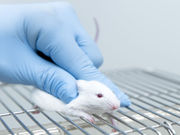Scientists say bioprosthetic ovaries have produced mouse pups in infertile mice
WEDNESDAY, May 17, 2017 (HealthDay News) — In an article published online May 16 in Nature Communications, U.S. scientists report they’ve created a bioprosthetic ovary in a mouse using three-dimensional (3D) printing technology — and the mouse has given birth to healthy pups.
Teresa Woodruff, Ph.D., of Northwestern University’s Feinberg School of Medicine in Chicago, and colleagues first removed the ovary of the female mouse. They then replaced it with the bioprosthetic ovary: a scaffold made by 3D technology that could house immature eggs. The implanted ovary did ovulate and restore fertility to the mouse, which later gave birth to pups.
According to co-researcher Ramille Shah, Ph.D., the Northwestern team used a safe, tolerable form of gelatin — a hydrogel — to build the scaffold. This material was stiff enough for transplant but also porous enough to interact with the mouse’s other tissues. That structure appears to have allowed ovarian follicles to function healthily within the manufactured ovary.
“This is the first study that demonstrates that scaffold architecture makes a difference in follicle survival,” Shah said in a Northwestern news release. “We wouldn’t be able to do that if we didn’t use a 3D printer platform.”
Several authors have filed an international patent application related to the study subject matter.
Copyright © 2017 HealthDay. All rights reserved.








